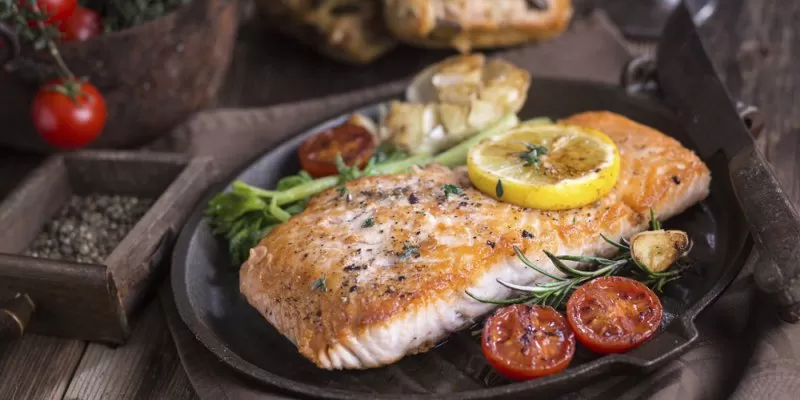The salmon family is distinguished by useful commercial varieties of fish, which are valued all over the world due to their exceptional taste and nutritional qualities. Some of the varieties of salmon quite often fall on the dinner table, others are rare. Today we will talk about equally valuable, but, nevertheless, different varieties of fish — chum salmon and sockeye salmon. What is better and what is the difference? Our experts know the answer.
Features of salmon representatives

Chum salmon is considered one of the most common commercial fish of the salmon family in the world. Under natural conditions, there are two varieties of chum salmon: summer and autumn. The first species is an inhabitant of the northern part of the planet, the second is found exclusively in the south. Autumn chum salmon differs from summer chum salmon not only in name, but also in size: it is much larger. It also differs in taste.
Chum salmon have an excellent memory of their birthplace and return there to spawn. This is a rather large fish, reaching in some cases a weight of 15 kg and 1 meter in length. It has a dull, even silver color. During the spawning period, her body gradually darkens, pinkish stripes appear on it, and her teeth increase in size.
Chum salmon is a very nutritious fish, containing in its composition a significant amount of vitamin E, C, B vitamins, as well as micro and macro elements such as phosphorus, chlorine, fluorine, potassium, iron, etc. It is a valuable source of protein (per 100 g fish contains about 19 g of protein).
ON A NOTE. Chum salmon is considered a dietary fish, it has tender tasty meat. Since its fat content is low, we recommend using sparing heat treatment methods in the process of its preparation: instead of frying, bake, stew, add to soups. Also, this type of salmon is perfect for aspic, salting, smoking, as a spicy ingredient in salads.
Sockeye salmon is another representative of the salmon family. True, it differs from chum salmon in much smaller sizes and not so impressive weight: on average, the fish reaches 30–40 cm in length and weighs 3 kg. The body of the sockeye salmon has a silvery color, an oblong shape, a rounded head without a pronounced jaw.
The sockeye salmon is distinguished by an unusual feature: when spawning, its body abruptly changes its color to bright red, the head becomes greenish, the jaw strongly stretches forward, becoming like a toothy beak, and the scales begin to shine. All these speak of irreversible processes leading to death.
Regarding nutritional properties, then sockeye salmon is not inferior in this chum salmon, and in some aspects even surpasses it. So, for example, it contains more protein — about 20 g per 100 product, a significant amount of phosphoric acid and fluorine. Sockeye salmon meat is an excellent antioxidant. By the way, this fish, unlike chum salmon, is very fatty and is perfect for smoking, preparing cold appetizers, salt.
Similar Features
Undoubtedly, both species of salmon under consideration are very valuable commercial fish with approximately identical habitats and diets. Both chum salmon and sockeye salmon can live in both salt and fresh water. Unfortunately, after spawning in the latter, they die.
Both salmon species under consideration are a valuable source of unsaturated fatty acids and lecithin, a powerful weapon in the fight against atherosclerosis. With regular use of chum salmon or sockeye salmon, the likelihood of a stroke, myocardial infarction is reduced to a minimum, bones are strengthened, and the digestive tract improves.
Comparative characteristics
Under natural conditions (meaning the process of fishing), an experienced fisherman will be able to distinguish chum salmon from sockeye salmon without any problems, primarily due to differences in appearance. But when buying fish in a store, it is quite difficult to distinguish one from the other, especially when it comes to the frozen version.
But when cutting the carcass, it immediately becomes clear who is who. Keta has rather pale meat, which is not typical for red fish. Sockeye salmon surprises with a bright red color, more like beef. The taste of the considered varieties of fish is significantly different. Due to the high fat content, sockeye salmon has a richer and at the same time delicate taste.
Caviar is also not the same. Chum salmon can “boast” of selected large eggs, dense, orange in color with light red patches. The taste of salmon caviar is delicate, with a creamy tint. But sockeye caviar is not particularly common on sale, which is associated not so much with its unpresentable appearance, but with a specific taste: bitter, with a pronounced fishy aftertaste.
What is better to choose?
Both species of red fish under consideration are distinguished by a significant amount of valuable substances, so it would not be entirely correct to choose one according to this criterion. Both chum salmon and sockeye salmon have a unique effect on the body, strengthening bones, improving the functioning of organs, blood composition, etc.
But as far as taste is concerned, everything is not so clear-cut here. Many say that sockeye salmon has an incredible, incomparable taste, vaguely reminiscent of beef.

Добавить комментарий
Для отправки комментария вам необходимо авторизоваться.